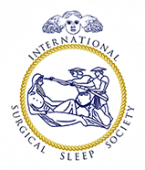Obstructive sleep apnoea (OSA)
This is a disorder in which breathing is repeatedly interrupted during sleep. OSA is on a spectrum of sleep breathing disorders, with snoring on one end and OSA on the other.
OSA is present in about 5% of individuals and it is more common in children, middle-aged males and women after menopause. OSA is caused by collapse of the airway tissues.
The collapsibility of the airway in any individual is based on a number of factors. There may be anatomic reasons such as a blocked nose, large tonsils or a small jaw.
Physiologic reasons relate to the way the airway functions. Some people cannot tolerate the normal changes in airflow during sleep as well as others.
Other factors may include unhealthy weight, use of alcohol or medications, and other medical conditions.
Insomnia
This is the inability to get to sleep or to maintain a sleep state. This is a very common sleep problem, and can exist with OSA.
Insomnia may be multifactorial. It can be related to physical ailments, such as not getting comfortable due to pain. Psychological concerns such as feeling stressed or low in mood can contribute.
Medical issues, including the side effect of some medications, may be the cause. Unravelling the causes of insomnia can be complex and when the simple adjustment of sleeping habits is not effective, a sleep psychologist may be recommended.
Medication to treat insomnia are normally regarded as a short term treatment.
Restless legs syndrome
Some people experience discomfort or even pain in their lower legs when they are trying to sleep. Moving or shaking their legs can stop this discomfort. Some people need to get out of bed to improve the discomfort.
There is a tendency for restless legs to run in families! It can be a symptom of iron deficiency and treatment with iron replacement can improve symptoms.
Narcolepsy
In this disorder the connection between the awake and the sleep states is unstable. People with narcolepsy may feel an urgent desire to sleep, may hallucinate as they drift off to sleep and may wake up and feel that they can’t move their bodies.
Some of these symptoms can occur in OSA and it’s important to differentiate the two conditions.
The diagnosis is made by a Sleep Physician after specific sleep laboratory testing. Medications are the first line treatment in narcolepsy.
Sleep talking and sleep walking
These are common in children, but are also seen in adults under stress, with sleep deprivation or as part of a mood condition.
The sleeper is not normally aware of the behavior, and people witnessing these may not be able to make sense of what the sleeper is saying or doing!
These behaviours typically resolve with time without intervention.







